![]() THE GONSTEAD COMPONENTS
THE GONSTEAD COMPONENTS ![]()
Learn what separates Gonstead chiropractors from the rest

X-Rays
In the Gonstead Method, we use Full Spine A-P and Lateral views. Full Spine films provide chiropractors the ability to acquire an accurate vertebral count, observe any spinal anomalies, provide visualization of spinal contours for posture analysis and show problems other than the chief complaint that cannot be discovered without X-rays. Full spine X-Rays allow us to care for the patient totally in analysis and corrective procedures.

Palpation
Both Static and Motion Palpation are utilized in the Gonstead Method to precisely pinpoint areas of involvement. Static Palpation is the “hands on” part of the examination. This will indicate changes in contour, tone, texture and temperature on the patient. Motion Palpation is used to determine which vertebra are stuck (subluxation) and its listing.

Instrumentation
Classically a dual probe instrument (Nervoscope or Delta-T) is used to get a bilateral temperature comparison of the spine to locate areas of inflammation. The readings obtained through instrumentation will show whether subluxations are present, if they are being corrected, and when correction has been attained.

Visualization
We consider all the information we can get from the patient by simply looking at them thoroughly. In the Gonstead Method, Visualization starts from the moment the patient walks in the door. Differences in height between the ears, shoulders, and hips as well as posture and gait are useful.
Symptomatology
Understanding problems with a patient’s health help us determine the area that a patient needs to be adjusted. Symptoms can help separate the two parts of the Autonomic Nervous System (Sympathetic and Parasympathetic) and aid us in applying a specific adjustment.In the Gonstead Method, we apply all the information from these analyses and correlate them to determine the most likely cause of the patient’s problem. After Subluxations are found, specific Gonstead adjustments are applied to effectively correct problem areas.
 GET AN APPOINTMENT
GET AN APPOINTMENT
Join Our Email List and Get Informed
Our team of highly trained professionals uses the latest healing technologies to restore you to pain-free health quickly and easily.
